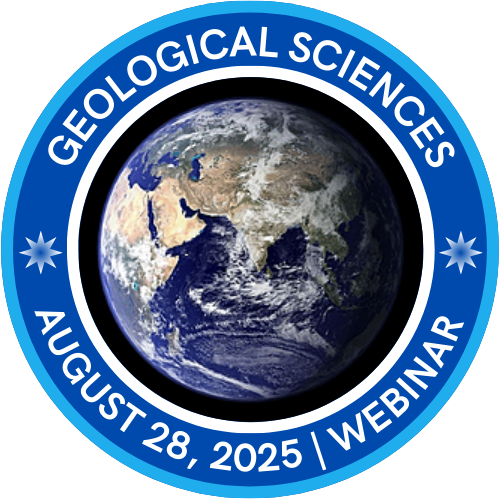Welcome to the Webinar on Earth and Geological Sciences, scheduled to take place on August 28, 2025, in a virtual format. It is a privilege to bring together an esteemed community of geoscientists, environmental researchers, policy makers, industry professionals, and academic scholars who are dedicated to understanding and preserving our planet. This webinar serves as a dynamic platform to explore cutting-edge research, technological advancements, and interdisciplinary approaches that are transforming the fields of earth and geological sciences. Curious about how the Earth works? This interactive webinar explores the fascinating world of Earth and geological sciences from volcanoes and earthquakes to climate systems and space geology. Designed for students, early-career researchers, and curious minds, the event will feature expert talks, live Q&A sessions, and practical insights into current research trends and career paths in geoscience. Whether you're studying geology or just love the planet, this webinar offers a front-row seat to the science that keeps our world in motion. We invite all participants to engage actively in discussions, ask insightful questions, and make the most of this opportunity to connect, collaborate, and contribute to the growing body of knowledge focused on Earth's systems, resources, and sustainability.
Understanding Earth and its geological processes is fundamental to addressing global challenges such as climate change, natural disasters, sustainable resource management, and environmental preservation. Earth and geological sciences encompass the study of the planet's structure, composition, and dynamic systems—including tectonics, volcanology, hydrology, and geochemistry which influence everything from ecosystem health to human infrastructure. As our environment undergoes rapid transformations, geoscientific knowledge becomes increasingly critical for predicting and mitigating the impacts of phenomena like earthquakes, landslides, sea-level rise, and extreme weather events. Modern advancements in satellite remote sensing, geospatial mapping, and geophysical modeling have empowered researchers, environmental scientists, geologists, and engineers to gain deeper insights into Earth's processes. The integration of data analytics, artificial intelligence, and machine learning further enhances our ability to monitor, predict, and respond to natural hazards and environmental shifts. Earth science also plays a key role in the exploration of renewable energy sources, sustainable mining practices, and groundwater management. As global awareness of environmental sustainability grows, the role of Earth and geological sciences remains central in shaping resilient, informed, and sustainable societies.

The global earth and geological sciences market is expected to experience substantial growth from 2024 to 2035, driven by increasing investments in environmental monitoring, natural resource exploration, climate change mitigation, and infrastructure development. In 2024, the global market for geological services and technologies is estimated at approximately USD 45.3 billion and is projected to reach around USD 96.8 billion by 2035, growing at a compound annual growth rate (CAGR) of 7.2%. The geotechnical services sector, vital for construction and infrastructure safety, is forecasted to rise from USD 18.7 billion in 2024 to USD 42.5 billion by 2035, at a CAGR of 8.1%, reflecting the growing need for urban development and disaster resilience. The environmental geology segment, including groundwater monitoring, soil assessment, and contamination studies, is expected to expand from USD 11.2 billion in 2024 to USD 27.6 billion by 2035, growing at a CAGR of 8.6%, fueled by global efforts toward sustainable land and water management. Remote sensing and GIS applications in geology are also gaining traction, with the market estimated to grow from USD 5.9 billion in 2024 to USD 16.4 billion by 2035, at a CAGR of 10.2%, driven by advancements in satellite technology, AI-based modeling, and real-time environmental monitoring. The mineral exploration market is anticipated to grow from USD 6.8 billion in 2024 to USD 15.3 billion by 2035, supported by rising demand for critical raw materials such as lithium, rare earth elements, and copper used in green technologies and energy storage. The carbon capture and geological sequestration segment is projected to increase from USD 3.1 billion in 2025 to USD 13.9 billion by 2035, with a CAGR of 16.3%, reflecting the global push for carbon-neutral strategies. North America dominates the market due to its advanced infrastructure and exploration activities, while Asia-Pacific is expected to witness the fastest growth, driven by increasing investments in mining, construction, and environmental research. Overall, the Earth and geological sciences market is poised for robust expansion as technological innovations, regulatory pressures, and global sustainability goals continue to shape the demand for geological expertise and solutions.